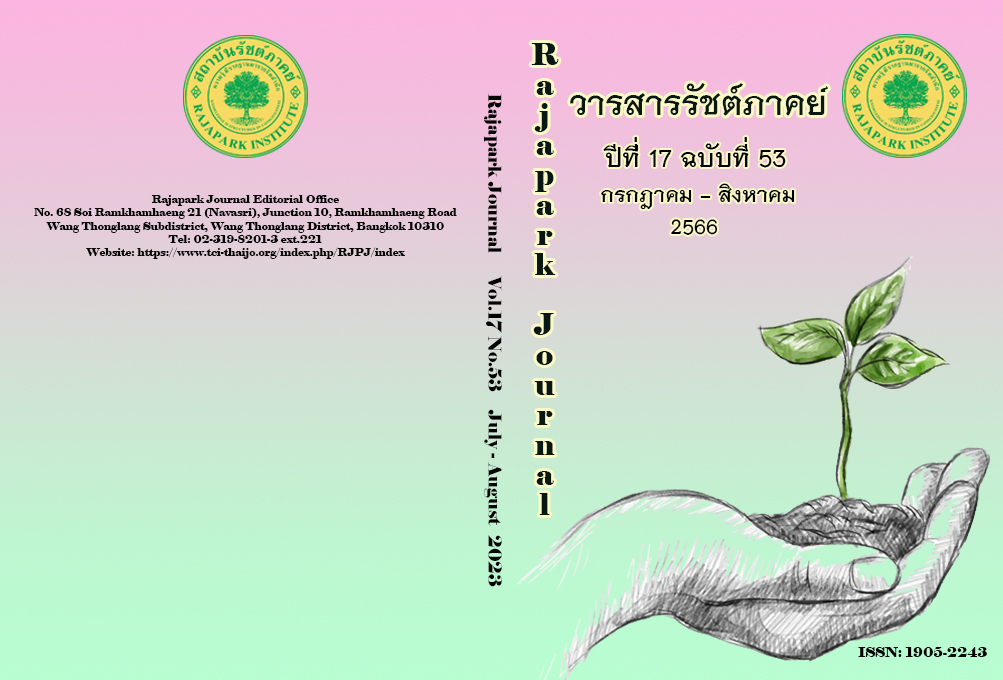A Contrastive Analysis of Headlines Writing Techniques in FIFA World Cup 2022
Main Article Content
Abstract
In the world of information technology, a news story plays a crucial role in people’s daily lives as it will keep them informed about the current situations in an ever-changing world. Therefore, understanding the news structures in newspapers, including the headlines, becomes essential. This Contrastive Analysis of Headline Writing Techniques in FIFA World Cup 2022 was conducted to investigate and compare the occurrences and frequency of techniques in the Bangkok Post, the New York Times, and the Metro. The data were analyzed based on the theoretical framework proposed by Reah (1998), Fredrickson et al. (1991), and Metcalf (2013). The findings found that idioms were the most frequently used technique in all three newspapers, while loaded words were the most popular technique in the Bangkok Post (f =33,14.53%). Intertextuality was found the most in the Metro (f=30, 12.55%). As the tabloid newspaper, the Metro had a more significant number in phonology (f=50, 20.92%) than those in the Bangkok Post and the New York Times, which are the broadsheet newspapers. Homophone was the only technique absent in all three newspapers. The findings implied that almost every headline-writing technique was used in all the three newspapers. Studying these techniques would be useful in both reading the headline and studying English. Reading a news headline is also a practical reading strategy to improve English skills. Moreover, the understanding of headline writing techniques would enable readers to learn new cultures because headlines were often made based on cultural and social backgrounds.
Article Details

This work is licensed under a Creative Commons Attribution-NonCommercial-NoDerivatives 4.0 International License.
Views and opinions appearing in the Journal it is the responsibility of the author of the article, and does not constitute the view and responsibility of the editorial team.
References
Bangkok Post. (2022). 2022 FIFA World Cup. www.bangkokpost.com
Bowles, D.A., & Borden, D.L. (1997). Creative Writing and Editing for Print Media. Wadsworth.
Bunyarat, P. (2020). A Study of Headline Structures in English Language Newspapers. Life Sciences and Environment Journal, 21(1), 156-168. https://ph01.tci-thaijo.org/index.php/psru/article/view/239787
Chairat, P. (2014). English Code-Mixing and Code Switching in Thai Songs. NIDA Journal of Language and Communication, National Institute of Development Administration, 19(22), 1-27. https://so04.tci-thaijo.org/index.php/NJLC/article/download/46944/38902
Chan, K.L. (2016). Power Language Index: Which are the World’s Most Influential Languages?. http://www.kailchan.ca/wp-content/uploads/2016/12/Kai-Chan_Power-Language-Index-full-report_2016_v2.pdf
Charuchinda, R. (2003). An Analysis of Noun Phrases Used in the Bangkok Post Front-page Headlines[Unpublish Master’s thesis, Srinakharinwirot University].
FIFA. (2022). World Cup 2022. https://www.fifa.com/
Fredrickson, L.T. & Wedel, P.F. (1991). English by Newspaper: How to Read and Understand an English Language Newspaper. Newbury House.
Hodgson, F. (1998). Modern Newspaper Practice: A Primer on the Press. Focal Press.
Kulthani, C. (2018). Headline Writing Techniques in World News Articles[Master’s Thesis, Thammasat University].
Lent, J.A. (1978). Mass Communications in the Third World: Some Ethical Considerations. In Paper Presented at the Annual Meeting of the Speech Communication Association Summer Conference on Intercultural/International Communication. Tampa, Florida. https://files.eric.ed.gov/fulltext/ED157114.pdf
Marcinkeviciene, R. (2008), Zamro ribos ir paribiai, Spaudos patirtys. Versus aureaus.
Mardh, I. (1980). Headlines on the Grammar of English Front Page Headlines. Gotba Malmo: CWK Geerup.
Metcalf, A. (2013). The Grammar of (Newspaper) Headlines. The Chronicle of Higher Education.
METRO. (2022). World Cup 2022. www.metro.co.uk
Nedjaroen, N. (2020). Linguistic Strategies in Clickbait Headlines of Online News. Journal of the Faculty of Arts, Silpakorn University, 39(2), 237-263. https://so04.tci-thaijo.org/index.php/jasu/article/view/185178
Nitsaisook, N., & Dhanesschaiyakapa, U. (2019). An Analysis of Colocations and Semantic Prosody in Thai Political News Headlines in the Bangkok Post. IJoLLT, 2(1), 26-38. http://ijollt.usm.my/index.php/archives/65-all-article/485-ijollt-02012019-3
Prateepchaikul, N. (2010). Headlines Writing Techniques in General News Articles[Master’s thesis, Srinakharinwirot University].
Reah, D. (2002). The Language of Newspapers. Routledge.
Richardson, J.E. (2007). Analyzing Newspapers. Palgrave Macmillan.
Seawnoi, T. (2008). A Comparative Study of Business News Story Structures in Bangkok Post and the National[Master’s Thesis, Srinakharinwirot University]. http://thesis.swu.ac.th/swuthesis/Eng(M.A.)/Thanyarat_S.pdf
Smith, D. (2009). Bad Headlines: Double Meanings from Around the World. https://www.djsmapping.com/headline.shtml
Stovall, J.G. (1993). Writing for the Mass Media (3rd ed). Prentice Hall.
The New York Times. (2022). World Cup 2022. www.nytimes.com
Van Dijk, T.A. (1998). Critical Discourse Analysis. Palgrave Macmillan.
Waelatech, B. (2003). A Speech Act Analysis of Advertising Headlines in the Bangkok Post[Master’s Thesis, Prince of Songkla University]. https://kb.psu.ac.th/psukb/handle/2553/1365
Yano, Y. (2009). English as An International Lingua Franca: From Societal to Individual. World Englishes, 28, 246-255. doi:10.1111/j.1467-971X.2009.01587.x
Zarotis, G.F. (2019). Development of Sports Tourism. International Journal of Humanities and Social Science Invention (IJHSSI), 8(6), 1-7. https://www.researchgate.net/publication/351984762_Development_of_sports_tourism


